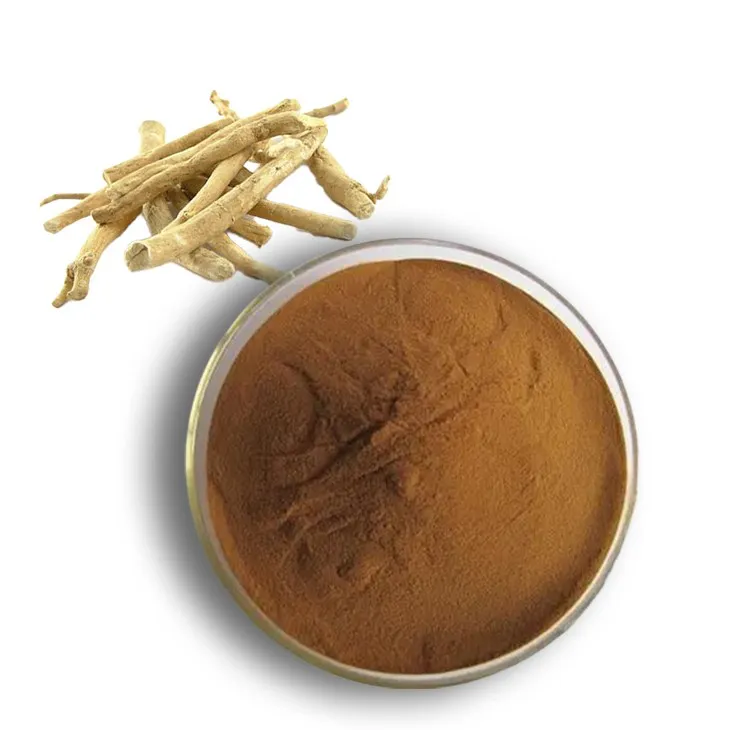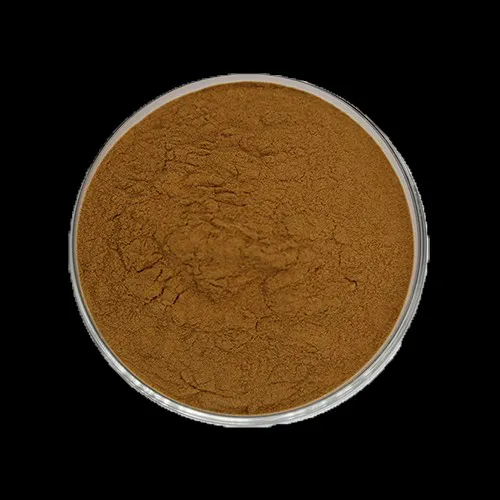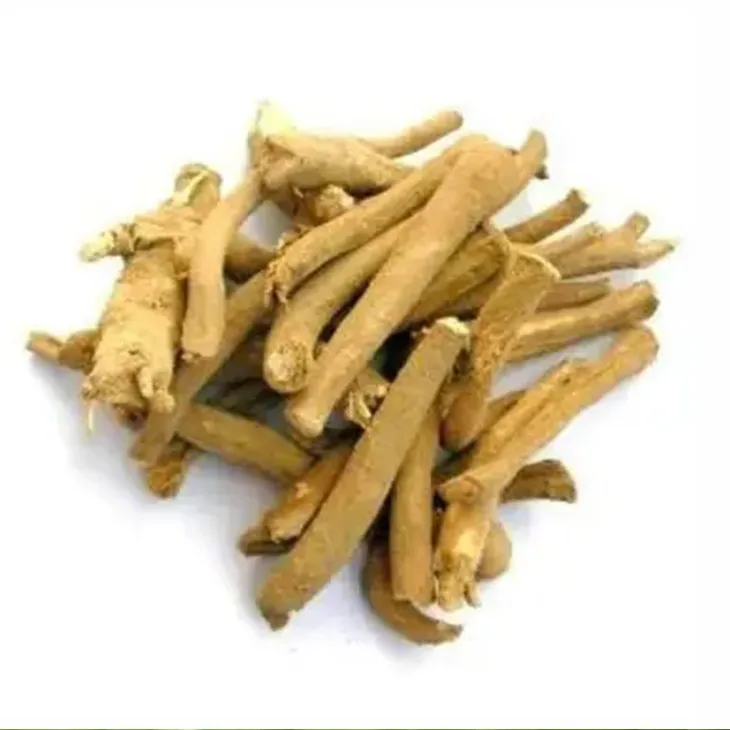- 0086-571-85302990
- sales@greenskybio.com
The Best Source of Natural Withania Somnifera Extract.
2024-11-28

Introduction
Withania somnifera, commonly known as ashwagandha, has a long and rich history in traditional medicine, particularly in India. For centuries, it has been used for various health benefits, including stress reduction, improved immunity, and enhanced cognitive function. In recent years, the demand for ashwagandha extract has grown significantly in the global market due to its potential health - promoting properties. As a result, it is crucial to understand the best natural sources of this valuable extract.

The Native Habitat: India
India as the Traditional Home India is considered the native habitat of ashwagandha. This herb has been an integral part of Ayurvedic medicine, one of the world's oldest holistic healing systems. In India, ashwagandha grows in various regions, mainly in the dry and arid areas. The soil and climate conditions in these regions play a significant role in the growth and quality of the herb.
Wild - Harvested Ashwagandha In some parts of India, wild - harvested ashwagandha is still available. However, this practice needs to be carefully managed to ensure sustainability. Over - harvesting from the wild can lead to a decline in the plant population, which may also affect the genetic diversity of the species. Therefore, regulations and ethical considerations are necessary to protect the natural habitats where ashwagandha grows wild.
Cultivated Ashwagandha in India To meet the increasing demand, large - scale cultivation of ashwagandha has been adopted in India. Indian farmers have extensive experience in growing this herb. They are familiar with the traditional cultivation methods that have been passed down through generations. These methods often take into account the local climate, soil type, and water availability. For example, in some regions, ashwagandha is planted during the monsoon season when there is sufficient moisture in the soil.

Other Countries' Contributions
The United States
In the United States, ashwagandha cultivation is a relatively new phenomenon. However, with the growing interest in herbal remedies, some farmers have started to cultivate this herb. The advantage in the US is the availability of advanced agricultural technology. Farmers can use modern irrigation systems, soil testing techniques, and pest control methods. For instance, precision irrigation can ensure that the ashwagandha plants receive the right amount of water at the right time, which is crucial for the growth of high - quality plants.
China
China has also shown an interest in ashwagandha cultivation. China has a large area of arable land and diverse climatic conditions, which can be suitable for different varieties of ashwagandha. Chinese farmers are known for their efficient farming practices. They are quick to adopt new cultivation techniques, such as greenhouse cultivation, which can protect the plants from extreme weather conditions and pests. Greenhouse - grown ashwagandha can have a more stable quality and higher yield compared to open - field cultivation in some cases.
Australia
Australia has unique environmental conditions that can be favorable for ashwagandha growth. The vast and relatively unpolluted land in Australia provides an opportunity for large - scale and sustainable cultivation. Some regions in Australia have a climate similar to the native habitats of ashwagandha in India. Australian farmers are exploring ways to cultivate ashwagandha while maintaining the ecological balance of the land. For example, they are using native pollinators to help with the fertilization process of the ashwagandha plants.

Sustainable Cultivation Methods
Organic Cultivation Organic cultivation is becoming increasingly popular for ashwagandha. This method avoids the use of synthetic fertilizers, pesticides, and herbicides. Instead, organic matter such as compost and manure is used to enrich the soil. Organic ashwagandha is considered to be of higher quality as it is free from chemical residues. For example, in India, some farmers are converting their traditional ashwagandha fields to organic cultivation, which not only improves the quality of the extract but also helps in conserving the environment.
Agroforestry Agroforestry is another sustainable cultivation method for ashwagandha. In agroforestry systems, ashwagandha is planted together with trees. The trees can provide shade, which is beneficial for ashwagandha as it is a shade - tolerant plant in some stages of its growth. At the same time, the roots of the trees can help in soil conservation and water retention. For instance, in some parts of Africa, where agroforestry is being experimented with for ashwagandha cultivation, the combination of ashwagandha and native trees has shown promising results in terms of plant growth and quality.
Water Conservation Since ashwagandha is often grown in dry regions, water conservation is a crucial aspect of sustainable cultivation. Drip irrigation is one of the effective methods used. Drip irrigation delivers water directly to the roots of the plants, minimizing water loss through evaporation. In addition, rainwater harvesting can also be used in ashwagandha cultivation areas. By collecting and storing rainwater, farmers can ensure a more stable water supply for their ashwagandha plants, especially during the dry seasons.

The Role of the Environment
Soil Quality The quality of the soil has a direct impact on the growth and quality of ashwagandha. Ashwagandha prefers well - drained soil with a good amount of organic matter. In regions with poor soil quality, amendments such as adding compost or other organic fertilizers are necessary. For example, in some sandy soils, the addition of compost can improve the soil structure and nutrient - holding capacity, which in turn promotes the healthy growth of ashwagandha plants.
Climate Ashwagandha is adapted to a specific range of climates. It generally thrives in warm and dry climates. However, extreme temperatures, either too hot or too cold, can affect its growth. In regions with cold winters, special protection measures may be required for ashwagandha plants, such as covering them with mulch or using greenhouses. On the other hand, in extremely hot regions, proper irrigation and shading are essential to prevent the plants from drying out.
Pollution Pollution, whether it is air, water, or soil pollution, can have a negative impact on ashwagandha. High levels of pollutants in the air can deposit on the leaves of the plants, interfering with their photosynthesis process. Polluted water can introduce harmful substances into the plants through their roots. Therefore, it is important to choose cultivation areas that are relatively free from pollution sources, especially for the production of high - quality ashwagandha extract.
Harvesting Techniques
Timing of Harvest The timing of the harvest is crucial for obtaining high - quality ashwagandha extract. Ashwagandha plants should be harvested at the right stage of maturity. If harvested too early, the active ingredients in the plant may not have fully developed. On the other hand, if harvested too late, the quality of the extract may decline. In general, ashwagandha is harvested when the fruits are ripe and the leaves start to turn yellow.
Harvesting Methods The method of harvesting also affects the quality of the extract. Manual harvesting is often preferred as it allows for more selective harvesting. Workers can carefully pick the ripe parts of the plant while leaving the immature parts to continue growing. In contrast, mechanical harvesting may result in a mixture of ripe and unripe parts, which can lower the quality of the final extract. However, manual harvesting is more labor - intensive and time - consuming.
Post - Harvest Processing After harvesting, proper post - harvest processing is necessary to preserve the quality of the ashwagandha. The plants should be dried quickly to prevent the growth of mold and the degradation of active ingredients. Drying can be done in the shade or using low - temperature drying methods to avoid over - drying, which can also affect the quality of the extract. Once dried, the plants can be ground into powder and further processed to extract the active compounds.
Conclusion
In conclusion, the best source of natural Withania Somnifera Extract is a combination of factors. India, as the native habitat, has a long - standing relationship with ashwagandha and offers both wild - harvested and cultivated sources. However, other countries such as the United States, China, and Australia are also making important contributions through sustainable cultivation methods. The environment, including soil quality, climate, and pollution levels, plays a crucial role in determining the quality of the extract. Additionally, proper harvesting techniques, from the timing of harvest to post - harvest processing, are essential for obtaining high - quality ashwagandha extract. By understanding and optimizing these factors, we can ensure a sustainable supply of high - quality ashwagandha extract for the global market.
FAQ:
What are the native habitats of Ashwagandha?
Ashwagandha is native to India. India has a long - standing relationship with this herb, and its native habitats in India are important sources of Ashwagandha.
What are the sustainable cultivation methods for Ashwagandha in other countries?
There are various sustainable cultivation methods in different countries. These may include proper soil management, appropriate watering schedules, and the use of natural fertilizers. For example, some countries may focus on organic farming techniques to ensure the high - grade quality of Ashwagandha extract. However, specific methods can vary depending on the local climate and soil conditions.
How does the environment affect the quality of Ashwagandha extract?
The environment plays a crucial role in determining the quality of Ashwagandha extract. Factors such as soil quality, sunlight exposure, and rainfall can influence the growth and chemical composition of the Ashwagandha plant. For instance, plants grown in nutrient - rich soil with the right amount of sunlight are likely to produce higher - quality extracts. Similarly, a stable climate without extreme weather conditions can also contribute to better - quality Ashwagandha.
What are the important harvesting techniques for Ashwagandha?
Harvesting techniques are vital for the quality of Ashwagandha extract. Timing is crucial; Ashwagandha should be harvested at the right stage of growth. Also, proper handling during harvesting, such as gentle cutting to avoid damage to the plant, is important. After harvesting, quick and proper drying methods need to be employed to preserve the active compounds in the plant, which ultimately affects the quality of the extract.
Why is Ashwagandha important in traditional medicine?
Ashwagandha has been used in traditional medicine for centuries. It is believed to have various health benefits, such as reducing stress, improving immunity, and enhancing overall well - being. Its long - standing use in traditional medicine systems, especially in India, is a testament to its perceived importance in maintaining health.
Related literature
- Ashwagandha: A Comprehensive Review on Its Phytochemistry, Pharmacology, and Therapeutic Potential"
- "The Role of Ashwagandha in Ayurvedic Medicine: A Review of its Traditional Uses and Modern Research"
- "Ashwagandha Extract: Sources, Composition, and Health - promoting Properties"
- ▶ Hesperidin
- ▶ citrus bioflavonoids
- ▶ plant extract
- ▶ lycopene
- ▶ Diosmin
- ▶ Grape seed extract
- ▶ Sea buckthorn Juice Powder
- ▶ Beetroot powder
- ▶ Hops Extract
- ▶ Artichoke Extract
- ▶ Reishi mushroom extract
- ▶ Astaxanthin
- ▶ Green Tea Extract
- ▶ Curcumin Extract
- ▶ Horse Chestnut Extract
- ▶ Other Problems
- ▶ Boswellia Serrata Extract
- ▶ Resveratrol Extract
- ▶ Marigold Extract
- ▶ Grape Leaf Extract
- ▶ blog3
- ▶ blog4
-
Wholesale Passion Fruit Extract Suppliers.
2024-11-28
-
Organic Genistein, Australia.
2024-11-28
-
Standard - process Nutmeg extract.
2024-11-28
-
Yohimbine Bark Extract
2024-11-28
-
Dandelion Root Extract
2024-11-28
-
Lavender Extract
2024-11-28
-
Echinacea Extract
2024-11-28
-
Ivy Extract
2024-11-28
-
Calendula Extract
2024-11-28
-
Acerola Extract
2024-11-28
-
Clove Powder
2024-11-28
-
Resveratrol extract
2024-11-28
-
Garcinia Cambogia Extract
2024-11-28





















